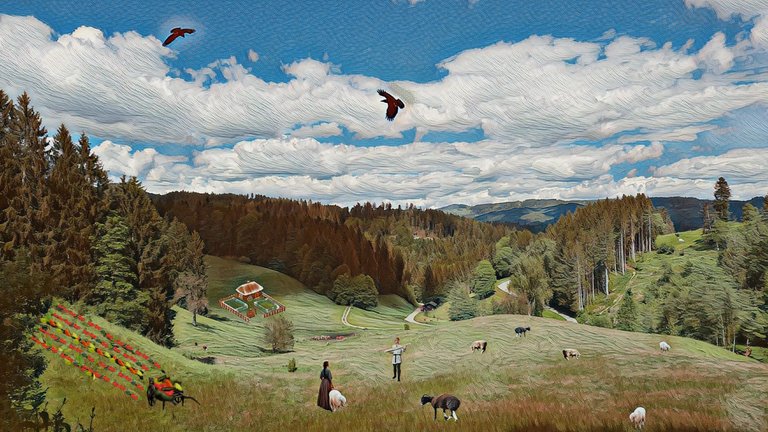
The LMAC Community is offering yet another opportunity to participate in our Collage Contest. This round, #222, presents a timeless scene from the Black Forest.
Photo by @fotobrina
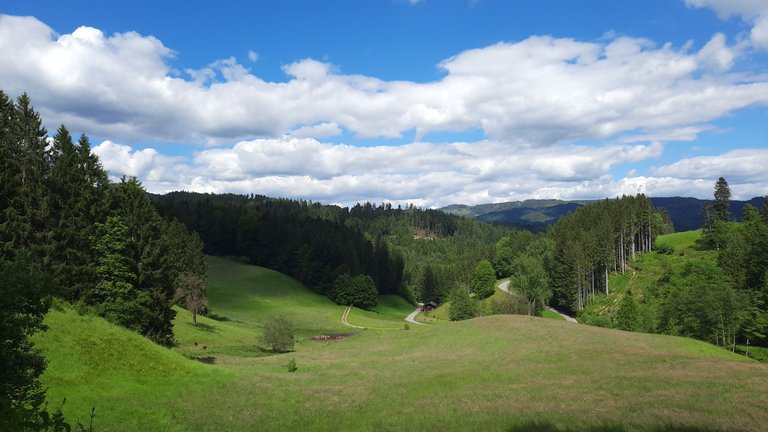
Because of the timeless quality in this photo, I thought of all the lives that have passed through the forests, and traversed the green hills in the picture. I remembered reading of a time in England when an 'open field' system of agriculture was in place, a time when land was managed communally. According to these historical writings, people in the open field system did not work for an overlord, but for themselves on shared, common property.
A.D. Hines wrote, in 1912 of this communal system:
The primary type of settlement with which we must start is that of the group of households planted together and forming a ton or township. To the township was allotted a sufficient area of land, of which only a part was at once taken up for cultivation and meadow land, while the remainder was waste land and common property.
The land brought under cultivation was allotted to the different households in strips of an acre or half an acre, each household originally receiving altogether a hide of a hundred and twenty acres; that is usually one hundred and twenty strips, for the half acre was probably a later subdivision.
Medieval Plowing

Credit: Woodcut, author unknown. 14th century. Source of image: Myers, Philip Van Ness. Public domain
Once someone had gathered together five strips, that person became a thegn and then could allot parcels to others. The arrangement was that the thegn would receive a portion of the goods, or a portion of the goods' value from the allotted land.
In addition to the land owned by thegns and land farmed in common, the monarch held large estates and had people work that land for him. He would mete out large parcels to favored lords and ecclesiastics as he pleased.
A.D. Hines writes further, the workers on these properties were in no way serfs. They retained the rights of a free person. Hines explains:
The enormous majority of these occupiers of the soil did not forfeit their political freedom and their political rights merely because they held their land on condition of service; and they remained in their own eyes and in those of every one else free ceorls (a coerl is a free peasant).
Re-enacter in Front of Anglo Saxon Farm Hut (Replica)
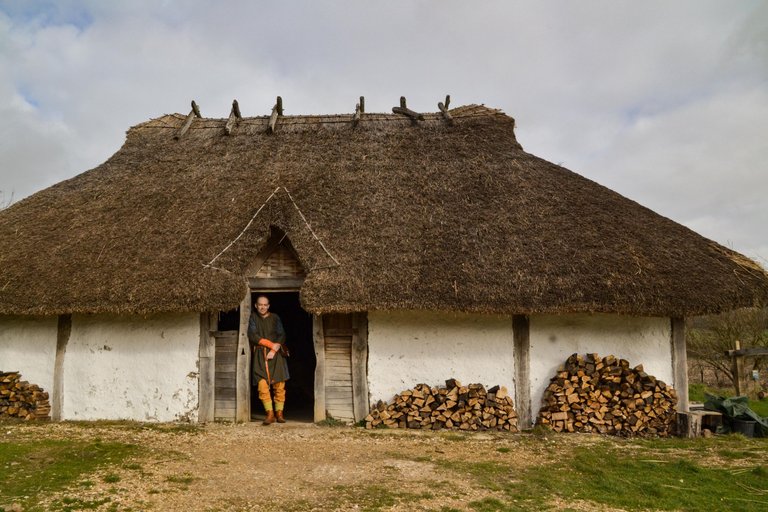
Credit:RHB2002 on Wikimedia Commons. Used under CC 4.0 attribution share-alike international license.. This person might represent what a coerl looked like, and the kind of domicile the coerl lived in.
Over the centuries, the concept of open field farming fell away. Some historians mark the decline in the concept of common property to the reign of William the Conqueror. Apparently, William declared all land in England to be his, and he parceled out property to his supporters. These parcels were called 'closes'.
Over subsequent centuries, the Enclosure Movement swept across the country. Open pastures were sealed off and appropriated for land owners who set up large estates, and eventually manors on the appropriated land.
I consulted many sources on the history of this period, and there is agreement on only one aspect of the Enclosure Movement. The 'common' people didn't like it. There were rebellions as their land was taken from them, as their homes were knocked down, as they became homeless.
One of the most famous of these uprisings was Kett's Rebellion.
Robert Kett and His Followers Under the Oak of Reformation on Mousehold Heath, 1549
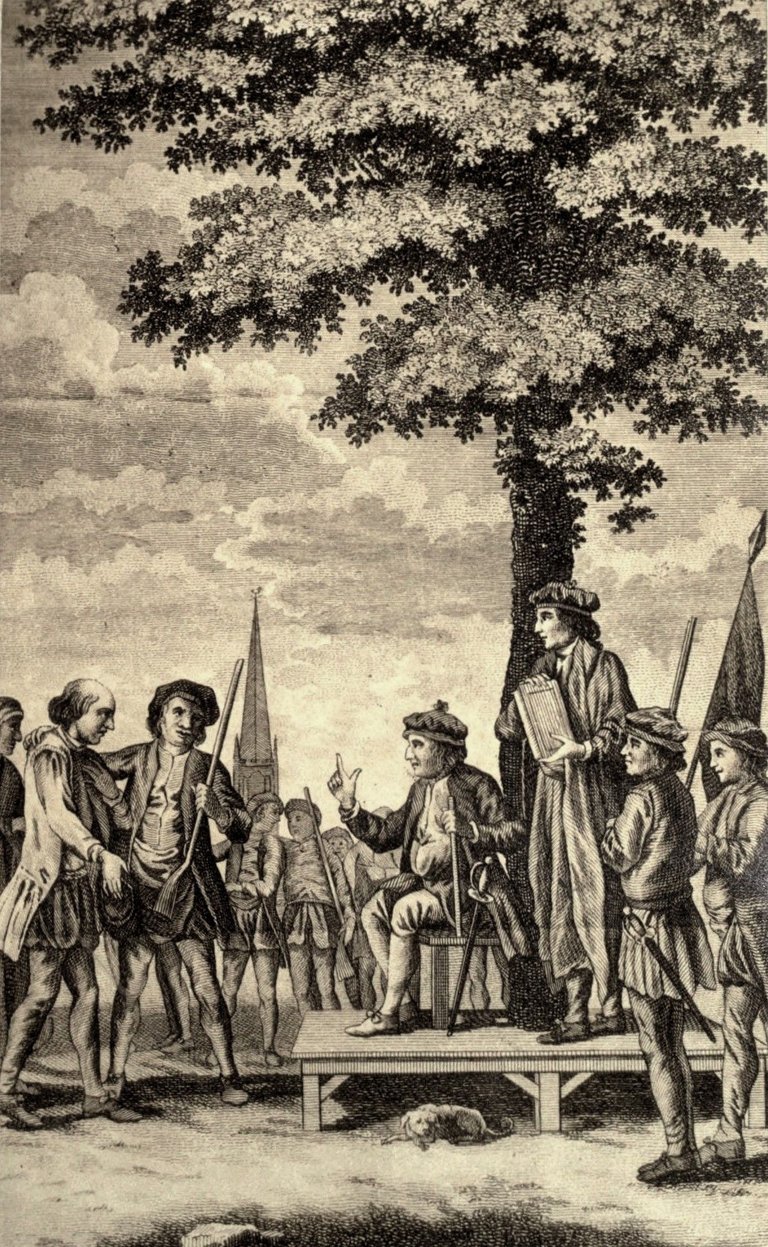
Unknown author. Public.
Robert Kett was a yoeman who, along with his brother William, joined cause with common folk to protest the taking of common lands for use of rich landowners. These enclosures were seen as infringing on the rights of the common people. Kett's Rebellion was quite large. It is said to have been comprised of 16,000 protestors, both rural and urban dwellers. As the protestors marched, they tore down fences that enclosed common lands.
The protestors (called rioters by the authorities) were met with force. The king sent an army, and that army was defeated. The protestors/rioters pressed on and were met with a larger army. This time the protestors lost. 3,000 of them died. Leaders were executed. Brothers Robert and William Kett were hanged.
Wymondham Monument to Kett's Rebellion
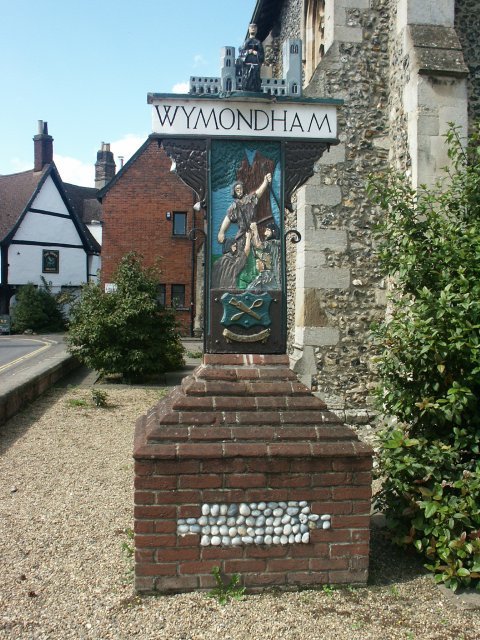
Credit: Katy Walters on Wikimedia Commons. Used under CC 2.0 Attribution and share-alike license.. The rebellion had begun in Wymondham. William was hanged from the tower of Wymondham Abbey.
It should be noted that protests against Enclosures--the taking of common land for use by large landowners--occurred before Kett's Rebellion. Kett's was a culmination of popular sentiment.
Note that some of the language in the manifesto published by the Kett's protestors addresses not only the fencing of common property, but also,
Reclaiming the rights of commoners from the gentry and clergy and preventing communal resources from being exploited to the point of depletion were also key concerns. As well as rights to common land, the demands also referred to common rights to the waterways, insisting that rivers should be 'ffre and comon to all men for fyshying and passage'.
After Kett's Rebellion, the Enclosure Movement continued. Many historians trace the rise of cities and the rapid growth of the Industrial Revolution at least in part to the Enclosure Movement. Peasants were forced to leave their farms and move to the cities. The increase in urban population provided cheap labor for industry. Some historians place the disparity in wealth that grew since then and that we see today, directly to the loss of land and impoverishment of the peasantry.
Wentworth Street, a London Slum, London,1872
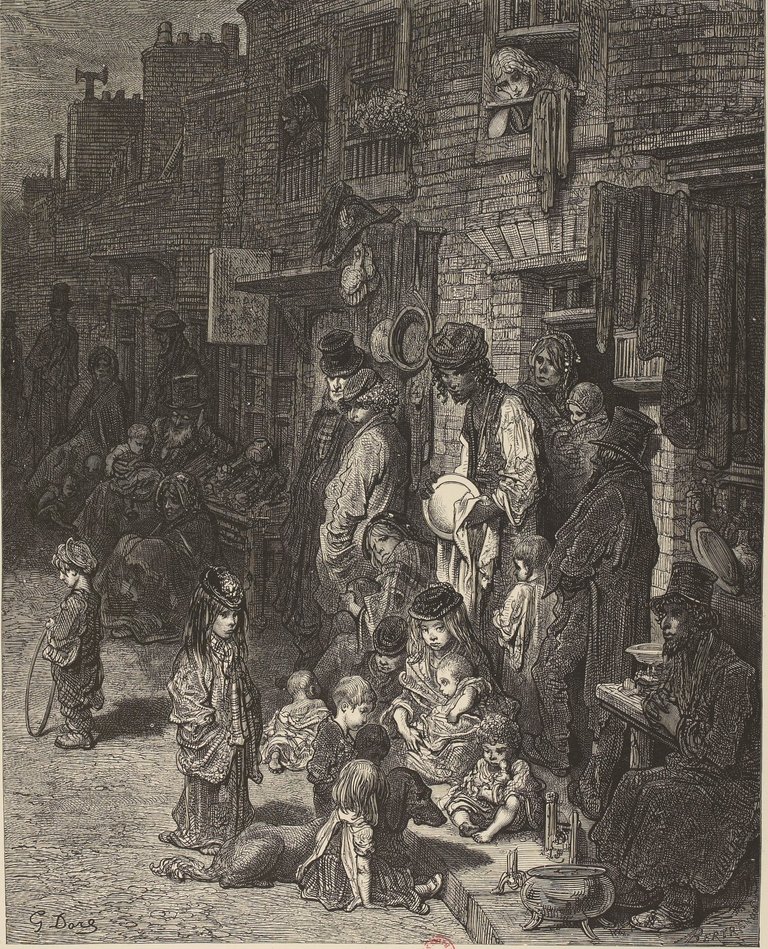
Credit: Gustav Doré. Public
However, many historians do not see that direct linear relationship between Enclosures, the growth of the Industrial Revolution, and the rise in wealth disparity. Here is a Youtube clip that discusses Enclosures' cause and effect at some length.
Before I made the collage at the top of the page, which shows a bucolic pre-Enclosure England, I made one that showed the effects of Enclosure. In the last frame of the collage, the common grounds are gone, as is the humble peasant home. These are replaced by fenced in areas, which belong to the baronial mansion on the hilltop.
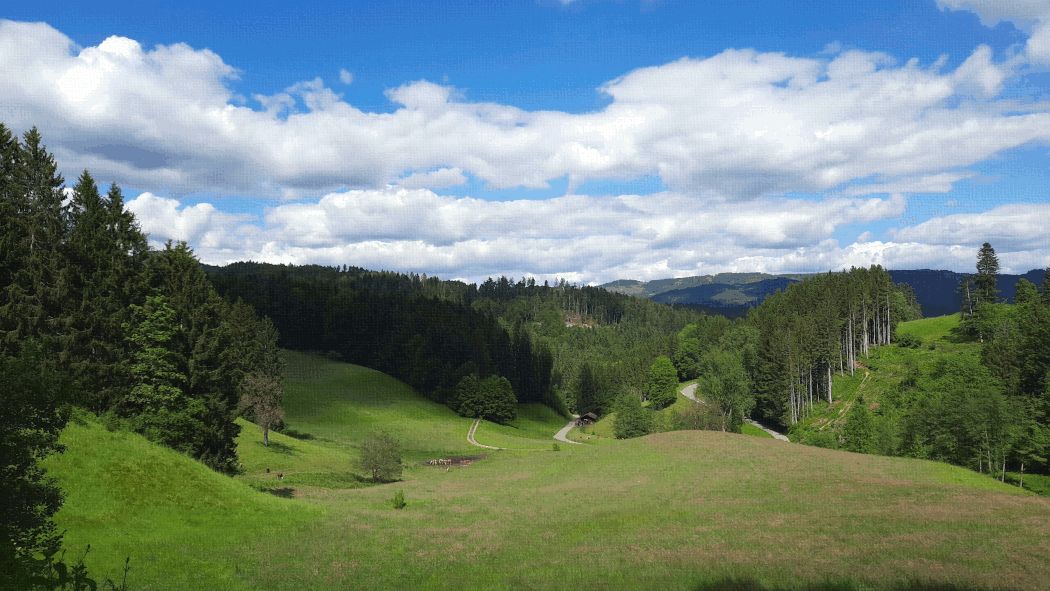
Hedge
@muelli
LIL
Sheep
@seckorama
LIL
Manor House
Darkmoon_Art
Pixabay
Medieval Village
Open clip art vector
Pixabay
Peasant
DeeDee51
Pixabay
Peasant woman
Moshehar
Pixabay
Sheep
@agmoore
Personal library
Peppers
@teungkulik
LIL
Raven
@redheadpei
LIL
LMAC and LIL
LMAC now has two monthly contests: A Themed Contest, and the Traditional Collage Contest. The traditional collage contest is currently in progress. The Themed Contest will resume on January 25. Please join in the fun. I do not compete in the contests because I am on the selection jury. I make collages for fun. I highly recommend the creative exercise to everyone.
LMAC is a welcoming community. We offer handsome monthly prizes, and curation for every collage submitted (must follow the rules spelled out in our announcement blog). Become a part of this community, especially if you are not an artist. You may be surprised at finding the artist in you.
Also, please note that our image library welcomes contributions from everyone on Hive, and anyone on Hive may borrow from the library. Procedures for borrowing and contribution are described in @shaka's blog, here.
Peace and health to everyone. Hive on!

